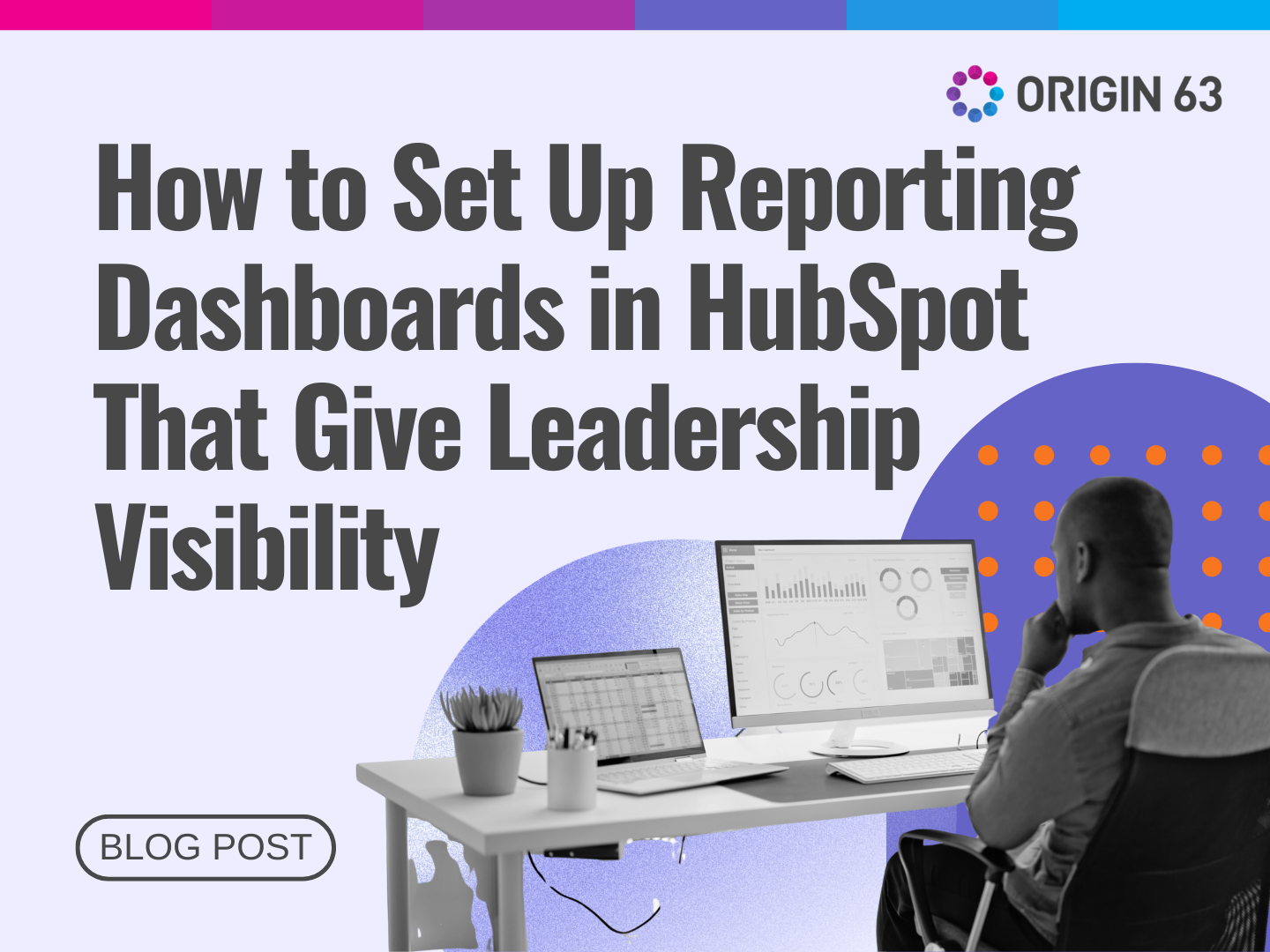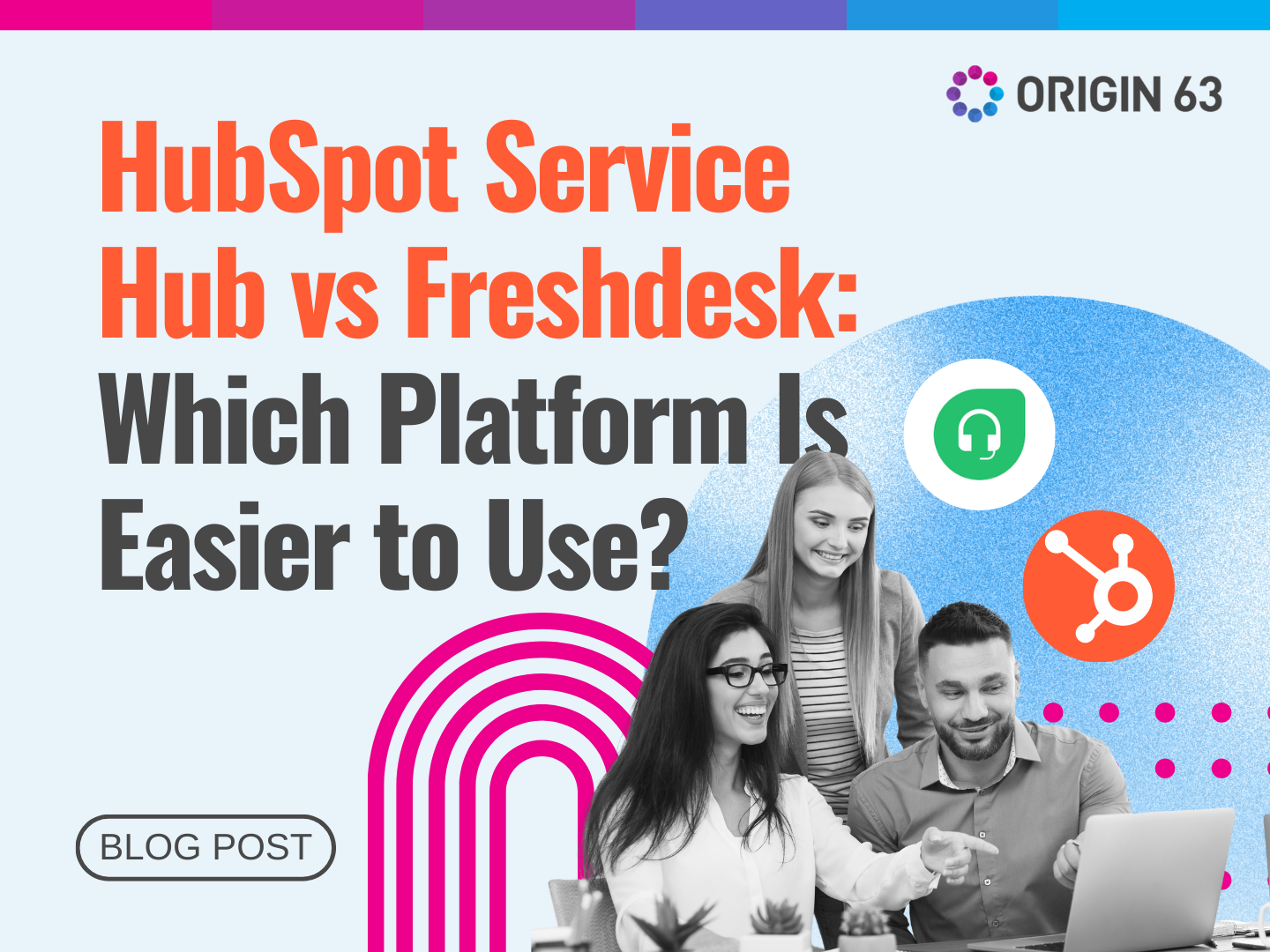For most companies, valuable data lives in spreadsheets, warehouses, or siloed apps. The information is there, but non-technical teams can’t access or use it without help from ops or IT. That slows everyone down and keeps data from driving real growth.
At INBOUND, HubSpot introduced Data Studio inside the new Data Hub. It’s built to make data both accessible and actionable, so teams can explore, clean, and activate insights without technical expertise.
As HubSpot Solutions Partners, we help companies bring their data into one place, configure Data Studio workflows, and turn information into outcomes that matter.
What Is HubSpot Data Studio?

HubSpot Data Studio is built to make data accessible for everyone, not just technical teams. It gives users a spreadsheet-like interface powered by AI, so working with data feels familiar and intuitive. You don’t need SQL or advanced analytics skills; you can shape datasets in minutes.
The tool connects directly to Google Sheets, business apps, and even data warehouses like Snowflake. This means teams can unify customer data from multiple sources without relying on long integration projects or manual imports.
Most importantly, Data Studio activates insights right inside HubSpot. Once a dataset is built, you can push it directly into CRM segments, workflows, and reports.
Poor data quality costs businesses an estimated $12.9 million every year. Cleaning, enriching, and activating data in one place lets Data Studio ensure every campaign, pipeline, and service workflow runs on information you can trust.
Why Data Studio Matters
Data Studio isn’t just another analytics tool. It changes how data is used across the entire business. When information is unified, accessible, and trustworthy, every team can make better decisions and move faster.
1. For Marketers
Marketers often juggle lists from CRMs, spreadsheets, and third-party platforms. This slows down campaign launches and creates inconsistent messaging. With Data Studio, they can combine all of that data in one place.
The spreadsheet-like interface makes it easy to build dynamic audiences, segment by behavior, and create campaigns that reflect what customers actually care about.
Instead of waiting on ops for every update, marketers can build and refresh lists themselves, which shortens campaign timelines and improves targeting.
2. For Sales
Sales reps need context that goes beyond names and email addresses. They want to know which accounts are expanding, which competitors the prospects mention, and what budgets have been discussed.
Data Studio makes this possible by pulling in external data alongside CRM records, giving reps a full view of each account.
Executives often hesitate to rely on insights. 67% of executives are uncomfortable using data from advanced analytics systems, even inside companies with strong data cultures.
Data Studio closes that trust gap by giving reps insights directly in the CRM, where they already work, and by keeping information fresh and connected to customer interactions.
3. For Service

Customer service teams are often the first line of contact, but they rarely have the full picture. They might only see the latest ticket, without understanding the customer’s overall history. Data Studio changes this by unifying conversations from calls, emails, and records into one view.
That way, an agent doesn’t just see that a customer submitted a billing issue today. They also see the past three related tickets, notes from sales about renewal, and even mentions of competitors in emails.
With this kind of context, service teams resolve issues faster and can even spot upsell opportunities in real time.
4. For Ops and IT
Ops and IT teams usually get stuck as the “data gatekeepers.” Every time marketing, sales, or service needs a new report or dataset, they file a request and wait. This constant back-and-forth slows down decisions and drains IT resources.
With Data Studio, non-technical users can access and prepare the datasets they need without waiting. Ops teams can set guardrails with governance tools, while frontline teams get the freedom to self-serve.
The result is less pressure on IT, more trust in the data, and a smoother flow of insights across the business.
Features & Demo Highlights
HubSpot Data Studio isn’t just about storing or visualizing information. It’s designed to improve data quality, enrich records with real context, and push insights directly into action. These are the features that make that possible:
Data Quality Overview
One of the biggest problems with traditional CRMs and data warehouses is that they quickly get messy. Duplicate contacts, misspelled company names, and outdated job titles pile up until teams lose trust in the system.
Data Studio addresses this with a Data Quality Overview that scans datasets for errors, duplicates, and inconsistencies. AI-powered cleanup tools then step in to merge records, standardize formats, and remove clutter.
Instead of wasting hours manually cleaning spreadsheets, teams start with confidence that their information is accurate and up to date.
Smart Enrichment

Most CRMs rely on manual entry or basic enrichment tools that only pull in generic details like industry or company size. The real insights, however, often live inside conversations.
A prospect might mention budget on a call, or a customer might describe a recurring frustration in an email. Without automation, those details disappear.
Data Studio changes this with Smart Enrichment. It uses AI to capture context from calls, emails, and chats, then adds that information directly into CRM records.
For example, if a prospect says, “We’re comparing vendors and plan to decide by Q4,” that becomes a property on the record that sales and marketing can act on. Service teams benefit too, since recurring issues are flagged and tied to the customer profile.
Rule Engine
As more teams gain access to data, governance becomes critical. Without oversight, self-serve tools can create chaos just as easily as they can solve it. Data Studio’s Rule Engine provides automated governance at scale.
Ops teams can set rules to enforce consistent naming conventions, require mandatory fields before activation, and flag suspicious data in real time.
For example, if a dataset contains duplicate company IDs or missing renewal dates, the system will highlight the issue before the dataset is used.
This balance gives non-technical teams freedom to build what they need while ensuring data remains reliable across the organization. Ops and IT get peace of mind, while business users get autonomy.
Demo Narrative: From Request to Action
Consider a marketing manager who wants to build a campaign targeting accounts likely to renew in the next quarter. In the old way of working, they’d submit a request to ops or IT, wait several days for someone to pull the data, then manually import it into HubSpot.
This process created delays, errors, and frustration. With Data Studio, the same manager logs in, connects relevant sources like Google Sheets and Snowflake, applies enrichment to capture renewal signals, and cleans the dataset with a few clicks.
Within minutes, the enriched audience is live in HubSpot and ready to power campaigns, workflows, and reports.
This speed matters because, too often, data never makes it into action. A 2022 SAS survey found that 42% of data scientists said their results weren’t used by business decision makers.
The insights existed, but they were stuck in reports or spreadsheets that didn’t reach the right people at the right time.
Data Studio closes that gap by putting datasets directly into the CRM, where teams can immediately use them to personalize outreach, refine sales plays, or resolve service issues.
From Data Chaos to Clarity: Before vs. After

The contrast between how most companies manage data today and how they can work with Data Studio couldn’t be clearer. Let’s look at what life is like before and after HubSpot’s new approach.
Today (Before)
For many organizations, data lives in a patchwork of spreadsheets, apps, and warehouses. Teams need insights, but they can’t get to them without sending requests to ops or IT. This creates bottlenecks and slows down decisions.
- Teams rely on manual imports from spreadsheets and disconnected apps.
- Ops and IT are flooded with requests for lists, reports, and cleanup.
- Marketing struggles to keep campaign audiences fresh.
- Sales can’t see external signals like competitor mentions or budget details.
- Service teams only see tickets in isolation instead of the full customer story.
The result is wasted time, frustrated employees, and missed opportunities. Even when analysts generate insights, those insights often sit unused because they never reach the teams who could act on them.
With Data Studio (After)
Data Studio flips that model. Instead of siloed workflows, businesses get one unified system where data is cleaned, enriched, and activated instantly. Non-technical teams can build what they need, while ops ensures quality and governance in the background.
- Data pipelines are unified, cleaned, and governed automatically.
- Non-technical users prepare datasets in a spreadsheet-like builder without coding.
- Enriched insights from calls, emails, and external sources flow into CRM records.
- Marketing launches campaigns with confidence, powered by live customer data.
- Sales gets complete account visibility that updates in real time.
- Service teams resolve cases faster with the full customer history at their fingertips.
The difference is clarity. Instead of chasing data across disconnected systems, every team works from the same trusted source. Insights don’t just sit in reports—they move directly into campaigns, pipelines, and service workflows.
How HubSpot Differentiates
Plenty of tools promise better access to data, but most of them come with trade-offs. They require technical expertise, expensive add-ons, or complex integrations that put them out of reach for everyday users.
HubSpot’s Data Studio is different because it’s designed to democratize intelligence and put data directly into the hands of the people who need it.
Here are just a few things that make it stand out:
1. Competitors Depend on Complexity

Traditional approaches to advanced data work usually require SQL knowledge, BI platforms, or external dashboards. This creates a steep learning curve that non-technical users can’t easily climb.
Marketing teams end up waiting for analysts, sales teams rely on static reports, and service teams rarely get to use the data at all. Even when insights are produced, they often sit outside the CRM, disconnected from the tools where teams actually operate.
2. HubSpot’s Democratized Intelligence
HubSpot built Data Studio on the principle that everyone should be able to use data, not just ops or analysts. The spreadsheet-like builder makes it approachable for non-technical users, while the rule engine ensures governance for ops and IT.
What sets it apart is the direct activation inside HubSpot CRM—datasets flow seamlessly into campaigns, workflows, and reports. This means insights aren’t locked in external dashboards. They’re live inside the system where sales, marketing, and service teams already work.
The result is a platform that combines power with simplicity. Competitors may offer advanced capabilities, but they keep them behind technical barriers. HubSpot differentiates by making advanced data work easy, accessible, and instantly actionable.
Our Perspective as a HubSpot Solutions Partner
Many companies want to get more value from their data but feel stuck. Their teams are buried in spreadsheets, their ops staff are swamped with requests, and their leaders don’t fully trust the reports they see.
HubSpot Data Studio solves these challenges, but like any new tool, it takes planning to set up well. Here’s what we do:
Migrating From Ops Hub to Data Hub
If you’re already using Ops Hub, moving to Data Hub can feel like a big leap. We help manage that transition so you don’t lose existing processes or workflows.
Our team ensures your data pipelines, integrations, and automations transfer smoothly, giving you a solid foundation inside HubSpot’s new structure.
Configuring Data Studio for Every Team
Data Studio is flexible, but it needs to be tailored to your business. We work with marketing, sales, and service leaders to understand what insights matter most, then configure workflows and datasets to match.
For example, we might set up enriched segments for marketers, account-level views for sales, and customer history dashboards for service. The goal is to make sure each team can actually use the data in their daily work.
Ensuring Clean and Governed Data
Data without governance quickly becomes noise. We help ops and IT leaders set up rule engines, naming conventions, and field requirements so datasets stay consistent and reliable.
That way, frontline teams can work independently without creating chaos, and leadership can trust that the data powering decisions is accurate.
Our focus is simple: unlock real ROI from AI-powered data tools without adding complexity. With the right setup, Data Studio doesn’t just clean and enrich your information. It transforms it into a growth engine for the entire business.
From Chaos to Clarity
Data is one of the most valuable assets a business has, yet too often it sits locked in spreadsheets, warehouses, or siloed tools.
Teams want to use it, but the complexity of accessing and cleaning data keeps them from moving quickly. The result is a bottleneck where opportunities are missed and decisions are delayed.
HubSpot Data Studio changes that reality. It makes high-quality data accessible to everyone. Marketers building audiences, sales teams looking for account insights, service reps resolving cases, and ops teams ensuring governance.
Instead of data chaos, businesses gain clarity. Instead of static reports, they get live insights that feed directly into campaigns, workflows, and customer experiences.
The future of growth isn’t just about having data, it’s about using it. With Data Studio, HubSpot puts the power of clean, unified, and actionable data in the hands of every team.
Work With Origin 63
Ready to unlock the power of HubSpot Data Studio? At Origin 63, we’ll help you migrate, integrate, and activate your data in weeks, not months.
Talk to a HubSpot Data Expert today and turn your data into outcomes.














.png?width=90&height=90&name=Arrows%20Partner%20Badge-test%20(1).png)

